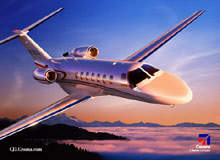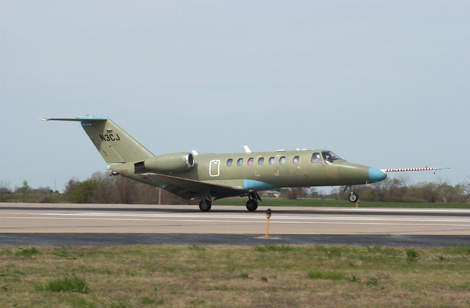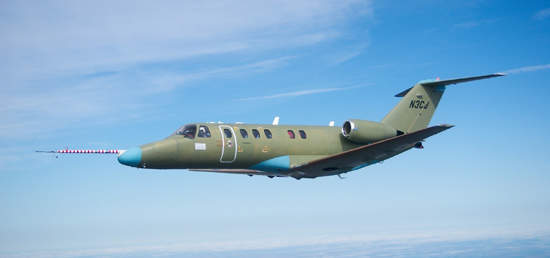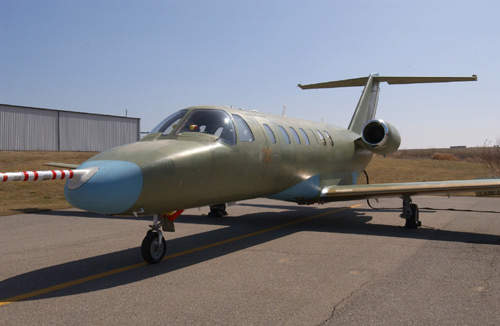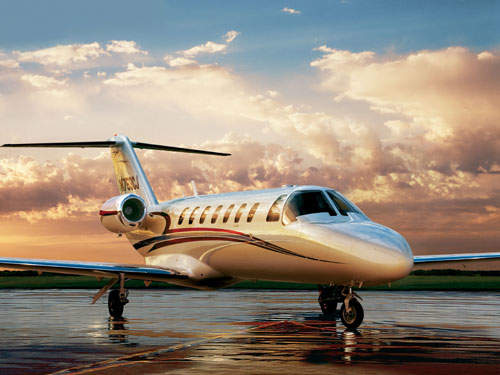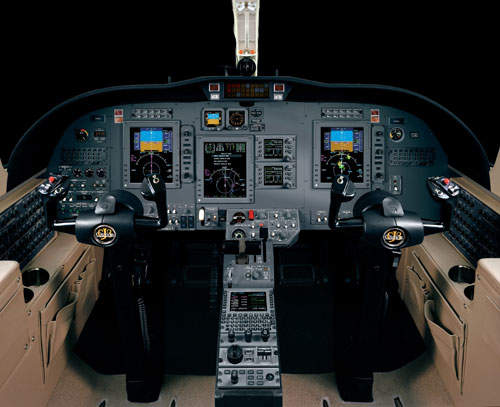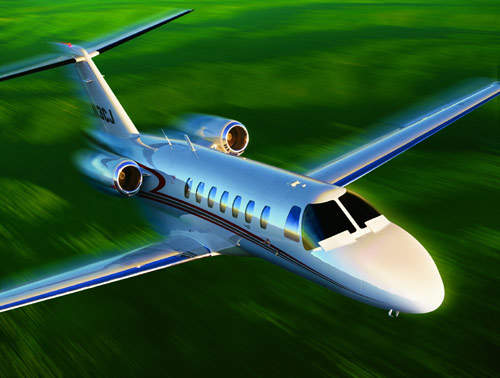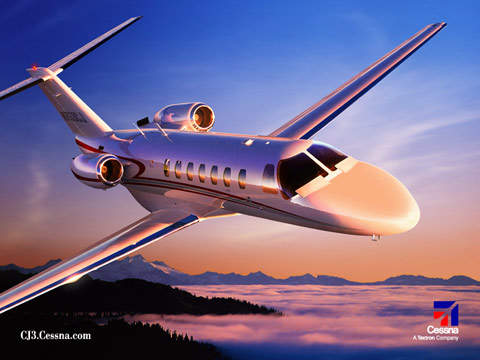Cessna announced the CJ3 aircraft in September 2002 and the roll out ceremony took place in February 2004. The CJ3 was awarded FAA type certification in October 2004 and first entered service in December 2004. The 100th CJ3 was delivered in November 2006. Cessna had received more than 230 firm CJ3 orders.
The Citation CJ3 was awarded “Best of the Best” in the light business jet category for the second time by the Robb Report in June 2010.
In May 2009, ACR Aero-Charter Airlines received its first of three CJ3s ordered from Cessna. The second was delivered in July 2009 and the third is scheduled to be delivered in 2010
The CJ3 is a development of the Citation family of business jets with more powerful engine, a 1m-longer fuselage providing more cabin room, about 10% higher take-off weight, and 12% higher cruise speed than the Citation CJ2.
The majority of the manufacturing of the Citation CJ3 aircraft is carried out on the CJ1, CJ2, CJ3 common production line at Cessna’s manufacturing facilities in Wichita, Kansas.
A development of the CJ3, the CJ4, made its first flight in May 2008. The CJ4 can accommodate up to eight passengers with a maximum payload of 952kg (2,100lb), 136kg (300lb) more than the CJ3.
The aircraft received US FAA (Federal Aviation Administration) type certification in March 2009, with the first delivery in April 2010 with GreenTrak flight planning software to an unnamed customer. European Aviation Safety Agency (EASA) certification is expected in late 2010.
CJ3 design
The aircraft is mainly of metal construction with low-weight composite materials in the fairings, wing tips and tailplane tips. The CJ3 aircraft is of similar design to the original Citation jet with tapered three-spar wings attached to the lower fuselage and podded engines mounted above the rear fuselage. The T-tail has a tapered tailplane.
Flight deck
The cockpit accommodates two crew members but is designed for single pilot operation.
The Rockwell Collins ProLine 21 avionics system displays the aircraft’s position on approach and on airport diagrams. The avionics display also shows departure and arrival procedures. Optional electronic charts include enhanced map overlays showing geopolitical maps with state boundaries, rivers, large lakes, airspace boundaries and high and low federal airways. The electronic charts are displayed on the flight deck’s central 8in×10in multi-function display.
The Collins FMS-3000 flight management system is fully integrated with an FAA approved electronic chart system which provides take-off and landing performance data. The V speed limit data are automatically calculated for the numbers of passengers entered and are shown on the primary flight display. The two primary flight displays are 8in×10in active matrix colour liquid-crystal displays.
The avionics suite also includes dual VHF-4000 radio tuning units, digital communications and navigation radios, digital audio control panels, a Goodrich Skywatch HP TCAS 1 Traffic alert and collision avoidance system (TCAS), a Goodrich Landmark TAWS 8000 terrain avoidance system and a Smiths electronic horizontal situation indicator (EHSI).
The navigation suite includes a Collins NAC-4000 and -4500 dual VHF omnidirectional radio ranger, an automatic direction finder, DME-4000 distance measuring equipment, an AHC-3000 attitude heading and reference system, an air data computer ADC-3000, a GPS-4000A global positioning system and an ALT-4000 altimeter.
Cabin
The cabin accommodates six club seats in a centre-aisle configuration The CJ3 cabin is 0.61m (23in) longer than that of the CJ1 and CJ2, providing extra leg room for the passengers. The wing construction does not include a spar carry-through in the cabin which necessitates stepping over in a conventional aircraft layout. The cabin can be customised to the operator’s specification. The cabin is air conditioned, heated and pressurised to a nominal pressure differential of 8.9psi (61kP).
There are three baggage holds in the nose, tailcone and in the cabin, providing a total baggage volume of 1.99m³. The baggage compartment in the cabin is accessible in flight.
Engines
The CJ3 aircraft is powered by two Williams FJ44-3A engines, each rated at12.37kN and providing nearly 15% additional take-off thrust compared to the CJ2. The engines, fitted with full authority digital engine control, are pod mounted above the rear section of the fuselage. There are two independent fuel systems with integral fuel tanks and a maximum fuel capacity of 1,783kg. The engine air intakes are fitted with engine bleed air anti-icing system.
Landing gear
The CJ3 is fitted with single-wheeled hydraulically-retractable tricycle type landing gear. The take-off field length is 969m and landing field length is 713m.
Performance
The maximum cruise speed is 773km/h at an altitude of 10,058m (417kt at 33,000ft). With two pilots, full fuel and four passengers with baggage, the CJ3 has an instrument flight rules range of 2,926km (1,580nm) and a visual flight rules range of 3,519km (1,900nm). The service ceiling is 13,716m (45,000ft) and the maximum gross take-off weight is 6,291kg (13,870lb). At maximum gross take-off weight the time to climb to 13,716m (45,000ft) is 27 minutes.

